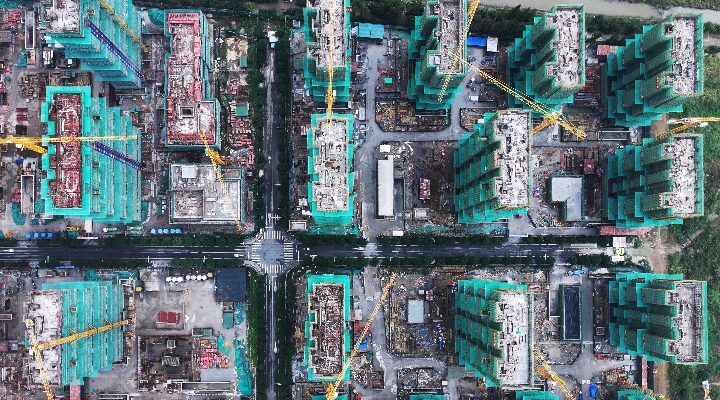This article is part of Morningstar’s Guide to Investing in Asia where we navigate the potential risks for the chance of fantastic rewards from across the region.
Sentiment around investing in Asia is far from positive. China’s stock market volatility and economic slowdown has tarred the region for many investors, put off by too many troughs and not enough peaks. Add to that, falling commodity prices have put pressure on countries reliant on natural resources for economic growth – and there’s the threat of rising interest rates in the US, widely expected to be initiated before the year end.
Asian nations look stuck between a rock and a hard place – potential headwinds from both sides of the Pacific.
“We don’t believe there is going to a financial disaster in China,” asserts Joel Kim, BlackRock’s head of Asia Pacific Fixed Income. “There is limited risk of a short term financial crisis. But there are longer-term threats; the new economic structure is restrictive to growth. We are less concerned by rising US interest rates, but Asia has other things to worry about – commodities are weak, and US growth indicators are slowing.”
It is not all bad news however – Kim names India as the most resilient economy; a net importer of commodities, independent of China, and less reliant on US growth than its smaller neighbours.
He is not alone in singling out India as a bright spark within the Asian region.
Maarten-Jan Bakkum, Senior Emerging Markets Strategist at NN Investment Partners, said that after the significant correction seen in emerging markets in 2015, investors’ expectations are now more realistic.
“Headwinds to growth remain, including low global trade growth; excessive leverage growth; US monetary policy normalisation resulting in capital outflows; and a deteriorated investment climate. We see deleveraging causing most pain in Brazil, Turkey, Malaysia and Thailand,” he said. “But where growth prospects are best, after reforms, are India, Philippines and Poland, driven by their good fundamentals.”
Solid Fundamentals, But Not Risk Free
Sandeep Kothari, manager of the Silver Rated Fidelity India Focus fund says the facts point towards long term economic and stock market growth.
“Of course we are bullish on India over the long term,” he said. “It has a young population, is English speaking and has a democratic political system. Indians get the concept of capital markets – their stock exchange is one of the oldest in Asia. There has already been tremendous wealth creation from simple business structures and the government has got the current account deficit under control. Debt is with corporates rather than with the state – these are all positive indicators.”
All this adds up to quite a compelling argument for investing in Indian equities; but even Kothari admits that it will not be a simple rally. Systems are clunky and historic corruption slows development.
The election of Prime Minister Narendra Modi in May last year was a positive step for the nation, he presides over the first single party majority government in three decades, meaning key reforms are easier to pass. But India did not just inherit a grasp of the English language from Britain, it has also adopted our two house political system, and the Upper House – their version of the House of Lords – often creates roadblocks. Ironic really, when the many of the reforms in question concern the building of motorways and laying of train lines.
“There is much to do with infrastructure development in particular,” says Kothari. “There was a credit boom in 2010 which meant there was a surge of investment in the sector but corruption was created and many of the projects were never completed and the banking system has been stuck with these loans. The process to clean up the mess will take time.”
Where are the Opportunities?
Manufacturing hubs – 100 “smart cities” – are being built to modernise urban areas and house rural to urban migrants. These cities need water, electricity, public transport, housing, education – all of which creates investment opportunities, but it will take time.
Forty percent of India’s population does not have a bank account – a statistic which Modi wants to eradicate. The Prime Minister wants everyone to have a bank account and has created subsidies to encourage this – a huge boon to the financial sector.
This also creates investment opportunities within financial tech – with such a young population, the largest in the world in fact, banking will have to be mobile.
“We have come a long way in India,” says Kothari. “Fifteen years ago if you wanted a telephone landline you had to pay a bribe and wait three years. Democracy has tackled that with the corruption bill. Transparency is now a priority.”
A good example of this new attitude is the Unique Identification Programme, a system which will hold biometric and retina data on all of India’s residents to help authenticate them and allow individuals free movement between states, safe in the knowledge they won’t lose their subsidies. The proposal has been met with political opposition however, and is currently undergoing a redraft.
Stick to the Simple Stuff
There are, of course, also 100-bagger stocks in India. Nanotech and biochemistry companies which spring from a highly educated, entrepreneurial workforce. These companies can deliver eye-watering returns, but Kothari says they are not welcome in his portfolio.
“On a five year time horizon, there is no doubt that India is an exciting place to be as an investor,” he says. “You do not need to look for particularly exotic companies either. There is plenty of low hanging fruit; just stick to roadbuilders, finance, healthcare and education.”






























